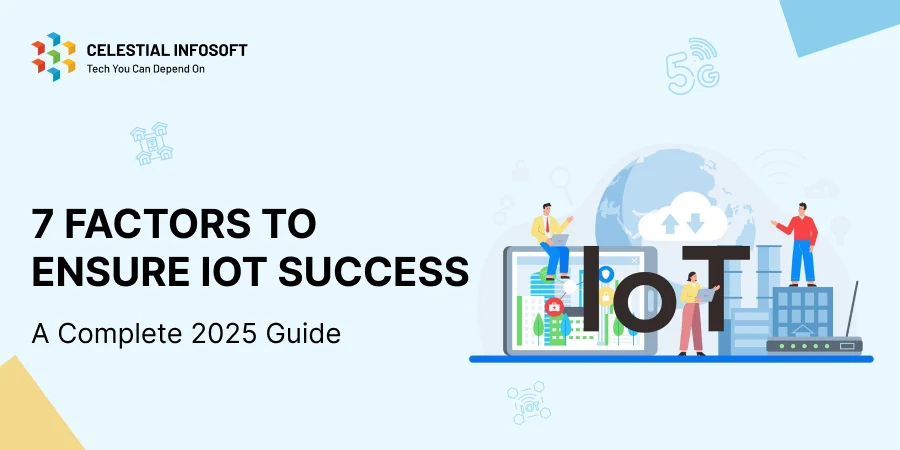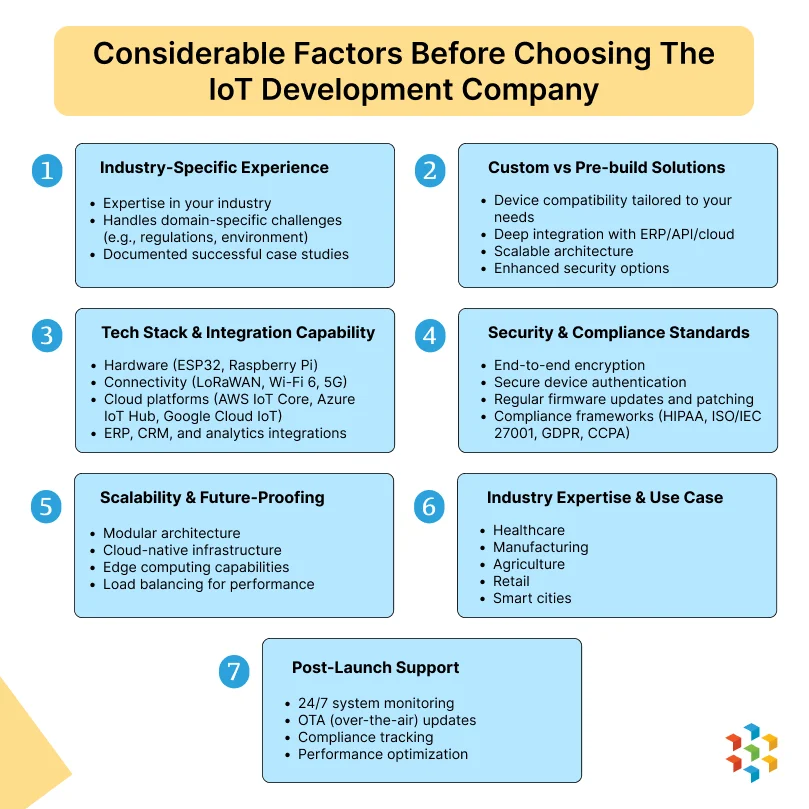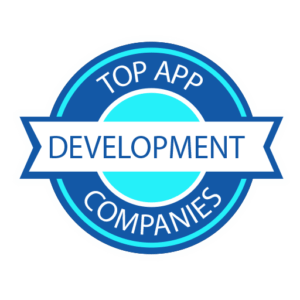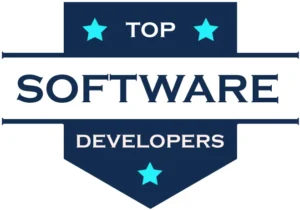
Table of Contents
Introduction – Why IoT Projects Still Fail in 2025
The Internet of Things (IoT) has moved from experimental pilots to mission-critical infrastructure. In 2025, manufacturers, healthcare providers, smart city planners, and retail chains are all leveraging IoT to optimize operations, reduce costs, and unlock new revenue streams.
Yet, despite this momentum, a Cisco survey revealed that 75% of IoT projects still fail. The reasons? Underestimating complexity, choosing the wrong technology stack, poor integration, and — most critically- partnering with the wrong development company.
This guide outlines seven essential factors to consider when selecting your IoT development partner, ensuring your investment yields measurable ROI, scalability, and security.

Factor 1: Industry-Specific Experience & Proven Case Studies
Why Industry Experience Is Critical
IoT is not a one-size-fits-all technology. A company that builds consumer wearables may struggle with industrial automation or healthcare compliance. Your partner should understand domain-specific challenges like data privacy laws, device durability, and environmental constraints.
Real-World Example
Losant helped Bosch implement predictive maintenance across industrial systems, saving costs and minimizing downtime.
Factor 2: Custom vs Pre-Build IoT Solutions
The Risks of Over-Reliance on Off-the-Shelf Platforms
Pre-built IoT solutions may be quick to deploy, but they’re often rigid, lack deep integration, and can stall innovation.
Why Customization Matters for Scalability
In 2025, IoT must integrate hardware, firmware, mobile apps, ERP systems, and cloud services. Without customization, you risk device incompatibility, generic dashboards, and limited API support.
Feature Comparison Table
| Feature | Pre-Build IoT | Custom IoT |
|---|---|---|
| Device Compatibility | Limited | Any hardware |
| Integration | Minimal | Deep ERP/API integration |
| UI/UX | Generic | Tailored to workflows |
| Scalability | Restricted | Built to grow |
| Security | Basic | Compliance-ready |
Factor 3: Tech Stack & Integration Capability
Essential Hardware, Software & Connectivity Options
A capable IoT development company should work with:
- Hardware: ESP32, Raspberry Pi, custom PCB
- Connectivity: LoRaWAN, NB-IoT, Wi-Fi 6, 5G
- Cloud: AWS IoT Core, Azure IoT Hub, Google Cloud IoT
- Programming: C/C++, Python, Node.js, Rust
If you want a complete breakdown of IoT tech stacks, connectivity options, and development workflows, we’ve covered it in IoT Application Development in 2025: A Complete Guide.
Why Integration Is the Real Differentiator
Even the smartest IoT system is useless if it can’t integrate with your ERP, CRM, and analytics tools.
Example: ClearBlade connected railway IoT sensors directly to maintenance software, reducing downtime by 27%.
Factor 4: Security & Compliance Standards
Why Security Is Non-Negotiable
IoT devices are prime cyberattack targets. Breaches can compromise sensitive data and disrupt operations.
Must-Have Security Features
- End-to-End Encryption (AES-256, TLS 1.3)
- Secure Device Authentication
- OTA Firmware Updates
- Role-Based Access Control
- Regular Penetration Testing
Key Compliance Standards
| Industry | Compliance |
|---|---|
| Healthcare | HIPAA, HITECH |
| Industrial | ISO/IEC 27001, IEC 62443 |
| Consumer | GDPR, CCPA |
Factor 5: Scalability & Future-Proofing
The Importance of Designing for Growth
Your IoT system should handle a 10x increase in devices without downtime.
Core Elements of a Scalable IoT Solution
- Modular Architecture
- Cloud-Native Infrastructure
- Edge Computing
- Load Balancing
- API-First Development
Example: Siemens MindSphere scaled a client from 50 to 5,000 connected machines in 3 years without service interruptions.

Factor 6: Industry Expertise & Use Case Insights
Industry Trends Driving IoT in 2025
- Healthcare: Remote patient monitoring
- Manufacturing: AI-driven predictive maintenance
- Agriculture: Precision irrigation
- Retail: Automated inventory tracking
- Smart Cities: Traffic and energy optimization
Case Study
Armis Security secured over 500,000 medical devices across 200 hospitals, cutting potential vulnerabilities by 97%.
Factor 7: Post-Launch Support & Maintenance
Why IoT Success Depends on Long-Term Support
IoT is not “set and forget.” Ongoing updates, security patches, and analytics are vital.
Essential Post-Launch Services
- 24/7 Monitoring
- Secure OTA Updates
- Compliance Tracking
- Data-Driven Optimization
- Scalability Planning
Example: PTC ThingWorx used predictive analytics to reduce downtime for a client by 27%.
FAQs
How do I choose the right IoT development company?
Look for proven industry expertise, a scalable architecture, and strong post-launch support.
How much does IoT development cost in 2025?
From $20,000 for pilots to $500,000+ for enterprise-scale systems.
What industries benefit most from IoT in 2025?
Manufacturing, healthcare, agriculture, retail, and smart cities.
How long does IoT development take?
Typically 3–12 months, depending on complexity and integration needs.
What is the biggest risk in IoT implementation?
Lack of security and poor integration with existing systems.
How do I future-proof my IoT solution?
Choose modular, API-first, and cloud-ready architecture with strong vendor support.
Conclusion
Selecting the right IoT development company in 2025 is not just a procurement decision; it’s a long-term strategic choice. Focus on industry expertise, customization, integration, security, scalability, and ongoing support to ensure your IoT investment thrives for years to come.



